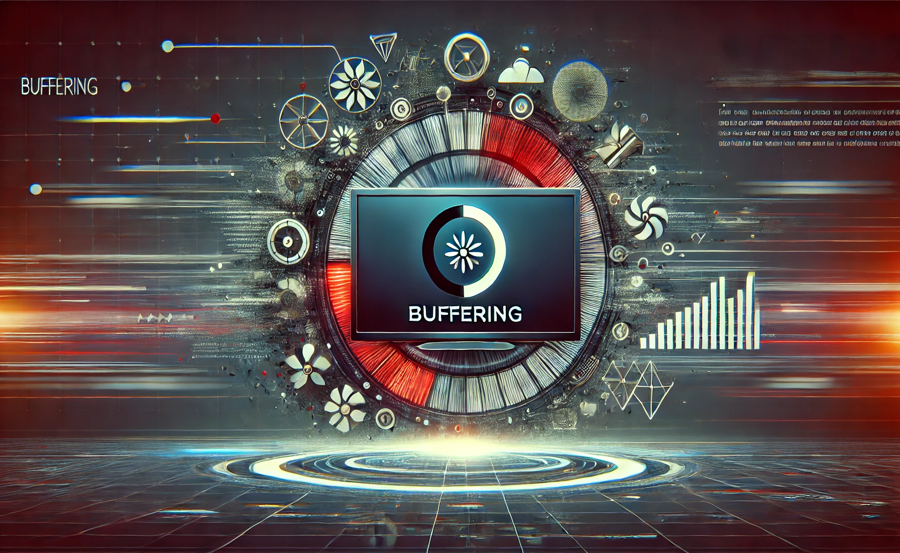Buffering during peak hours is one of the most common issues IPTV users face, especially when many people are streaming content simultaneously. Peak hours, typically in the evenings or during major live events, can lead to server overload and slow streaming speeds, resulting in frustrating buffering and interruptions. In this guide, we will explore step-by-step solutions to minimize IPTV buffering during these high-traffic periods.
1. Check Your Internet Speed
One of the main causes of buffering is insufficient internet speed, especially when many users are accessing the network at the same time. Streaming IPTV during peak hours requires a stable and fast internet connection.
- Solution: Perform a speed test to check if your connection meets the recommended requirements for IPTV streaming:
- 5-10 Mbps for SD content.
- 25 Mbps for HD content.
- 50 Mbps or more for 4K streaming.
2. Reduce Network Congestion
During peak hours, other users in your household may be consuming bandwidth for activities like online gaming, downloads, or streaming on other devices. This can lead to network congestion, affecting your IPTV performance.
- Solution:
- Limit the number of devices connected to your network during peak times.
- Pause large downloads or other bandwidth-intensive activities.
- Use Quality of Service (QoS) settings on your router to prioritize IPTV traffic over other network activities. QoS allows you to allocate more bandwidth to your streaming device, ensuring smoother performance.
3. Use a Wired Ethernet Connection
Wi-Fi networks can become congested or experience interference, especially when multiple devices are connected. A wired connection provides more stability and better speeds, reducing the chances of buffering.
- Solution: Connect your IPTV streaming device (Smart TV, Android box, etc.) directly to your router using an Ethernet cable. This will provide a more stable and reliable connection, minimizing buffering issues during peak hours.
4. Switch to a Less Crowded Wi-Fi Channel
If a wired connection isn’t possible, optimizing your Wi-Fi network can help reduce buffering. Wi-Fi routers broadcast signals on different channels, and during peak hours, these channels can become crowded with other nearby devices.
- Solution: Access your router’s settings and switch to a less crowded Wi-Fi channel. Many modern routers have an auto-select feature to find the best channel, or you can use Wi-Fi analyzer apps to identify the least congested channel manually.
5. Reduce Streaming Quality
Higher-quality streams, like HD or 4K, require more bandwidth. During peak hours, lowering the stream quality can help reduce buffering by requiring less data.
- Solution: In your IPTV app’s settings, adjust the stream quality to a lower resolution (e.g., from 4K to 1080p, or from 1080p to 720p). While the picture quality will be slightly reduced, the stream will be smoother and less likely to buffer.
6. Switch VPN Servers or Disable VPN
Many IPTV users rely on VPNs (Virtual Private Networks) to bypass geo-restrictions or maintain privacy. However, using a VPN can slow down your connection, especially during peak times when VPN servers are overloaded.
- Solution:
- Switch to a different VPN server, preferably one that is closer to your physical location.
- Use a VPN provider that offers high-speed servers optimized for streaming, such as ExpressVPN, NordVPN, or Surfshark.
- If possible, temporarily disable the VPN during peak hours to improve streaming speeds. However, only do this if you don’t rely on the VPN for accessing geo-restricted content.
7. Use an External Media Player
Some IPTV apps have built-in players that may not be optimized for peak-hour traffic or handle buffering effectively. Switching to an external media player, like VLC or MX Player, can help improve performance.
- Solution: In your IPTV app’s settings, look for the option to select an external media player. Once enabled, these media players often provide better buffering management and more stable playback.
8. Check IPTV Server Status
The IPTV provider’s servers may experience higher traffic during peak hours, leading to buffering. If the provider’s servers are overloaded, you may face issues despite having a strong internet connection.
- Solution: Contact your IPTV provider or check their website or social media pages for server status updates. If they are experiencing downtime or heavy traffic, you may need to wait until the load decreases. Some IPTV services offer backup servers that you can switch to for improved performance.
9. Clear Cache and Data
Over time, IPTV apps accumulate cached data that can slow down performance and cause buffering. Clearing the cache and data can help improve the app’s responsiveness, especially during peak usage times.
- Solution:
- On Android devices, go to Settings > Apps > [Your IPTV App] > Storage and select Clear Cache.
- Restart the app after clearing the cache and test the stream again. If problems persist, consider clearing App Data (note that this will reset your login and preferences).
10. Upgrade Your IPTV Subscription
Some IPTV providers offer different subscription tiers based on server performance. Lower-tier plans may suffer from congestion during peak hours, while premium plans may grant access to better servers with fewer users.
- Solution: Consider upgrading to a premium IPTV plan that offers better performance, especially during peak hours. These plans often provide access to dedicated servers with more bandwidth and less congestion, resulting in smoother streaming.
Conclusion
Buffering during peak hours can be frustrating, but with the right steps, you can improve your IPTV performance. By optimizing your internet connection, adjusting your device settings, and ensuring your IPTV provider’s servers are stable, you can minimize interruptions and enjoy smoother streaming. If the problem persists, contacting your IPTV provider for further assistance may help resolve the issue.
How to Integrate M3U Playlists with IPTV Applications: Step-by-Step Guide


